
Categories:
The AK-47, one of the most iconic guns in history, owes much of its accuracy to its front sight mechanism. The front sight is an integral component designed to offer precision and reliability under diverse conditions. Located at the barrel’s end, this piece of hardware serves as the primary aiming point for the shooter, facilitating both quick target acquisition and sustained accuracy over distance.
At first glance, the front sight may seem like a simple pin or post, but its design and placement are crucial for the effectiveness of the AK-47.
The front sight is typically a hooded post, which provides a clear aiming point for the shooter. Its hood offers protection against impacts and dirt, ensuring the sight remains functional in harsh conditions, from muddy trenches to arid deserts. Elevation can easily be adjusted by screwing the post up or down, giving the shooter the flexibility to adapt to varying shooting distances and wind conditions.
The consistent design and standardization of these sights make them easy to use, even for those new to the gun or in high-stress situations.
Positioned at the end of the barrel, the front sight works harmoniously with the rear sight to create a balanced aiming system. The shooter aligns the front sight with the notch or aperture of the rear sight, which allows for accurate shot placement. Iron sights such as these are considered highly dependable, as they don’t rely on batteries or complex electronics.
Their simplicity means that they are less prone to failure and can be easily adjusted or replaced if necessary.
The AK-47’s rugged reliability extends to its front sight, merging functionality with durability. This blend of simple yet effective design is one of the reasons the AK-47 has seen continuous use in military, paramilitary, and civilian settings since its creation. Whether in the hands of a soldier or a sport shooter, the front sight remains a critical feature that ensures the gun can deliver its rounds exactly where intended.
The front sight on an AK-47 plays a critical role in ensuring the shooter’s accuracy by providing a clear and consistent aiming point at the end of the barrel. This seemingly simple component functions as the reference point that allows the shooter to align their eye, the rear sight, and the front sight in a straight line toward the target. Without this alignment, the precision and effectiveness of each shot would be significantly compromised.
The front sight offers a focal point that the shooter can use to consistently position their weapon and line up their shot, thereby reducing variability and improving the accuracy of each projectile. When firing an AK-47, the shooter must account for several variables, including recoil, wind, and target movement. The front sight provides a stable and fixed element in this dynamic environment, enabling the shooter to quickly reacquire their target after each shot.
This is particularly important in rapid-fire scenarios, where maintaining accuracy over multiple shots can be challenging. The visibility and design of the front sight, often in the form of a post or an iron sight, are engineered to be easily distinguishable against a variety of backgrounds, ensuring that the shooter can maintain focus on the target. The importance of the front sight extends to marksmanship training and practice.
Novices and seasoned shooters alike rely on the front sight to develop their skills, particularly in the areas of sight picture and sight alignment. Inconsistent or improper use of the front sight can lead to poor shooting habits and degraded accuracy over time. By consistently using the front sight to establish a proper sight picture, shooters can refine their ability to hit a target accurately, even under stress or in less-than-ideal conditions.
Moreover, the front sight’s placement at the end of the barrel ensures that it is the last reference point before the bullet exits the gun. This position maximizes the sight’s effectiveness in aligning the shot, as any slight deviation can be more easily corrected when the sight is further from the shooter’s eye. As such, the front sight is an indispensable component of the AK-47, integral to both the weapon’s design and its utility in achieving precise shots.
The AK-47 front sight assembly is a crucial component that provides an aiming point at the barrel’s end, facilitating accurate target acquisition. This assembly is a well-engineered system that combines several parts to create a reliable and adjustable sighting mechanism. Central to this assembly is the front sight post, which is usually a vertically adjustable pin. The front sight post is threaded to allow for fine adjustments in elevation by rotating it up or down.
This adjustability ensures that the shooter can zero the weapon for precise shooting at various distances. Around the front sight post is the front sight hood or protective ears. These ears serve a dual purpose: they protect the front sight post from damage due to rough handling or accidental knocks, and they help to guide the shooter’s eye to the sight post, improving target alignment.
The hood can vary in design, but it universally functions to safeguard the post while aiding in visual alignment. Beneath the front sight post is the front sight base, which is attached to the barrel. The base houses the windage adjustment drum, a crucial component for horizontal adjustments. The windage drum allows for lateral movement of the front sight post as it is rotated, thus enabling the shooter to adjust for wind correction or inherent offsets in the gun’s accuracy.
The windage adjustment is typically achieved through the use of a tool or a bullet tip to depress and rotate the drum to the desired position. Additionally, the sight assembly may include a detent pin and spring that work together to lock the front sight post in place, preventing it from moving once zeroed. The detent pin engages with notches on the post, providing tactile feedback to the shooter to ensure secure and precise adjustment.
Materials used in the construction of the AK-47 front sight assembly are generally robust, often made from high-strength steel, ensuring durability and resistance to wear and corrosion. This robustness is essential, given the operational environments in which the AK-47 is commonly used. The entire front sight assembly is typically finished with protective coatings to further enhance its longevity and reliability under adverse conditions.
Adjusting the front sight of an AK-47 for precision is a critical step that can significantly enhance shooting accuracy. The front sight, located at the end of the barrel, serves as a crucial reference point when aligning your shot. For optimal performance, it is essential to ensure that this sight is not only well-aligned but also adjusted to account for various shooting conditions and personal preferences.
First, it is important to understand the mechanics of the front sight on an AK-47. The sight itself is typically composed of a post that can be adjusted for both elevation and windage. Elevation adjustments are made by moving the sight post up or down, which affects the vertical point of impact. Windage adjustments, on the other hand, involve shifting the sight post left or right to correct the horizontal point of impact.
To make these adjustments, a sight adjustment tool is typically required. This tool allows for precise movements of the sight post within its housing, making it possible to fine-tune the aim. To begin the adjustment process, the shooter should first fire a series of test shots at a target from a consistent distance, usually 25 to 50 yards. These initial shots help in diagnosing any deviations in the point of impact relative to the point of aim.
If the rounds are hitting high or low, vertical adjustments are necessary. Conversely, shots that land to the left or right of the intended target require horizontal adjustments. Once the shooter has determined the necessary corrections, the sight adjustment tool comes into play. For elevation changes, the tool is used to rotate the sight post. Clockwise rotations will lower the post, causing the rounds to impact lower on the target.
Counterclockwise rotations will raise the post, lifting the point of impact. For windage adjustments, the tool is used to push the sight post left or right within its housing. This lateral movement is delicate and should be done incrementally to avoid over-correction. After each adjustment, additional test shots should be fired to verify the changes’ effectiveness. This iterative process continues until the rounds consistently impact the target at the desired point of aim.
Comparing the AK-47 front sight with those found on other rifles yields intriguing insights into gun design and usability. The AK-47’s front sight, a simple post with protective ears on either side, is one of the rifle’s most recognizable features. Positioned at the barrel’s end, it provides the shooter with a clear aiming point that is quick to acquire. This design philosophy aligns with the AK-47’s overall emphasis on durability, simplicity, and ease of use.
In contrast, other rifles often utilize different sighting systems tailored to their specific operational contexts. Take for example, the AR-15, a popular rifle in both military and civilian markets. Its front sight, typically a fixed post integrated into a triangular base or sometimes a flip-up sight, is often paired with a rear aperture sight mounted on the carry handle or flat top rail.
The aperture sight on the AR-15 offers increased precision aiming by allowing the shooter to align the front post within a circular rear sight, thereby enhancing accuracy at longer distances. This dual sighting system provides a slight edge in precision compared to the more rudimentary AK-47 front sight, which relies heavily on the shooter’s ability to center the post in the rear notch without additional alignment aids.
Additionally, rifles such as the M14 employ a different approach with adjustable front and rear sights that allow for finer tuning in elevation and windage. These sights are designed for more precise military engagements, where shooters can benefit from the incremental adjustments to improve their shooting performance at varied distances. The M14 sights, being more complex, require greater familiarity and skill to use effectively compared to the straightforward AK-47 front sight.
Furthermore, modern tactical rifles frequently come equipped with rail systems that support a wide range of optics, from red dot sights to magnifying scopes. These optical sights provide an entirely different level of target acquisition and accuracy, often allowing for improved performance in low-light conditions and at extended ranges. While the AK-47’s front sight is robust and reliable under diverse conditions, it lacks the adaptability and precision that optical sights offer.
In summary, the AK-47’s front sight is a testament to the rifle’s enduring design philosophy of rugged simplicity.
The front sight on an AK-47 is a critical component for accurate shooting, serving as the primary aiming point at the barrel’s end. However, shooters can encounter several common issues with the front sight that may affect their accuracy and overall performance. One frequent problem is the misalignment of the front sight post, which can occur during shipping, handling, or heavy use.
This misalignment can cause the shooter to aim incorrectly, leading to shots that consistently veer off the intended target. To resolve this, the front sight post may need to be adjusted or centered using a sight adjustment tool designed specifically for the AK-47.
Another common issue is the loosening of the front sight post over time. Repeated firing can cause vibrations that gradually loosen the sight, leading to inconsistency in aiming. Regular maintenance checks should include ensuring the front sight post is securely fastened. If it is found to be loose, it must be tightened using the appropriate tools.
Additionally, the front sight can sometimes become obstructed by dirt, debris, or rust, particularly if the rifle is used in rugged outdoor environments. This can impair visibility and accuracy. Regular cleaning and maintenance of the front sight area are essential to prevent such issues. Using a small brush and solvent to clean the sight post and surrounding area can help maintain clear sighting.
Another challenge is the potential damage to the front sight post. Physical impacts, such as dropping the rifle or accidental bangs against hard surfaces, can bend or damage the sight post, rendering it ineffective. In some cases, it may need to be replaced entirely. It’s advisable to handle the rifle with care and use protective cases during transport.
Finally, improper lighting conditions can also pose problems with the front sight. In low-light or excessively bright environments, the shooter might find it difficult to get a clear sight picture. The use of aftermarket front sight posts with tritium inserts or fiber-optic elements can enhance visibility and aid aiming under varied lighting conditions.
Regular inspection, proper maintenance, and adjustments as needed are crucial for keeping the AK-47’s front sight in optimal condition, ensuring reliable and accurate aiming during use.
Maintenance of the AK-47 front sight assembly is crucial for ensuring accuracy and reliability during operation. Since the front sight provides an essential aiming point at the barrel’s end, keeping it in optimal condition directly impacts the efficacy of the gun. Regularly inspecting and cleaning the front sight assembly can prevent common issues such as misalignment, corrosion, or damage, which could otherwise degrade shooting precision.
Begin by unloading the gun and ensuring it is safe to handle. Once confirmed, disassemble the rifle according to the manufacturer’s guidelines to access the front sight. Use a soft brush or cloth to remove any dust, dirt, or residue that may have accumulated around the sight post and its housing. It is important to avoid using harsh chemicals or abrasive materials that could damage the sight or its components.
Cleaning the front sight post is an essential part of the maintenance process. A solvent designed for guns can aid in removing stubborn debris. Apply the solvent with a cloth or brush and gently scrub until the sight is clean. Once clean, wipe it down with a dry cloth to remove any remaining solvent. Inspect the sight post for any signs of wear or damage.
The sight post is threaded, and over time, it might become loose due to recoil or handling. Ensure that the post remains securely fastened, and if necessary, use a sight adjustment tool to reinstate its proper alignment. If the sight post is damaged or excessively worn, it should be replaced with a new part to maintain accuracy. Additionally, the front sight assembly may include protective wings that guard the sight post.
Examine these for bends, cracks, or other signs of damage. Ensure they are firmly attached and not interfering with the sight picture. Lubrication is another crucial aspect of maintenance. Apply a light coat of gun-grade lubricant to the moving parts within the sight assembly. This will help protect against rust and ensure smooth operation. However, avoid over-lubrication, as excessive oil can attract dirt and grime.
Reassemble the gun as per the manufacturer’s instructions after completing the maintenance checks and cleaning. Perform a final inspection to ensure that the front sight is correctly aligned and securely in place.
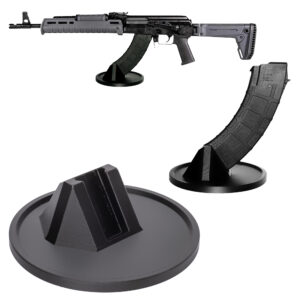
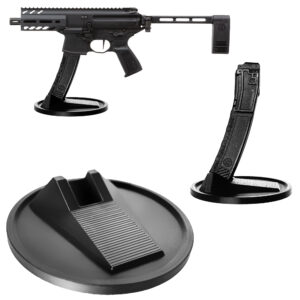
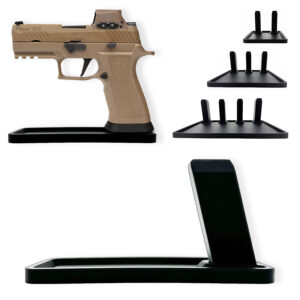


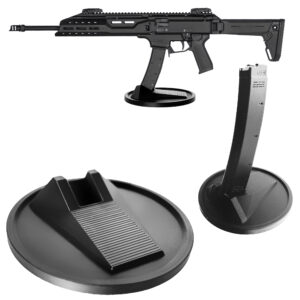
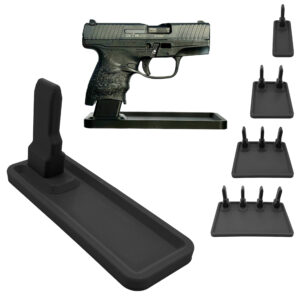

Colt
Colt M4 Carbine
Colt LE6920
Colt AR-15 A4
Daniel Defense
DDM4 V7
DDM4 V9
DDM4 V11
DDM4 ISR (Integrally Suppressed Rifle)
Smith & Wesson (S&W)
M&P15 Sport II
M&P15 Tactical
M&P15T
Bravo Company Manufacturing (BCM)
BCM Recce-16
BCM Recce-14
BCM MCMR Series
Aero Precision
M4E1 Series
AC-15
AR15 Pistol (Various Configurations)
Ruger
Ruger AR-556
Ruger SR-556
Ruger AR-556 MPR (Multi-Purpose Rifle)
Springfield Armory
Saint Victor
Saint Edge
Saint AR-15
PSA (Palmetto State Armory)
PSA PA-15
PSA AR-V
PSA Jakl (AR Pistol)
FN America
FN 15 Tactical Carbine
FN 15 Patrol
FN 15 DMR
Wilson Combat
Recon Tactical
Super Sniper
Protector Carbine
SIG Sauer
SIG M400 Tread
SIG M400 Elite
SIG M400 SDI
LWRC International
IC DI (Direct Impingement)
IC SPR
IC A5
Bushmaster Guns
XM-15 QRC
Bushmaster MOE
XM-15 Patrolman
Rock River Arms
LAR-15 Entry Tactical
LAR-15 Predator
LAR-15 Elite Comp
Stag Arms
Stag 15 Tactical
Stag 15L (Left-Handed Models)
Stag 15 Valkyrie
Noveske Rifleworks
Noveske Gen 4 N4
Noveske Space Invader (AR Pistol)
Noveske Recon
Anderson Manufacturing
AM-15 Optic Ready
AM-15 M4 Carbine
AM-15 Precision Rifle
Adams Arms
AA-15 Piston Rifle
P2 AARS (Adams Arms Rifle Series)
Black Rain Ordnance
SPEC15 Series
BRO Predator
Fallout 15
Diamondback Guns
DB15 Series
DB15CCMLB
DB15EB
Del-Ton Inc.
DTI-15
Del-Ton Echo 316H
Sierra 316M
Windham Weaponry
Windham SRC
Windham VEX-SS
Windham RMCS-4 (Caliber Conversion System)
Christensen Arms
CA-15 G2
CA-15 Recon
CA-15 Titanium Edition
Patriot Ordnance Factory (POF-USA)
Renegade Plus
P415 Edge
Revolution DI
LaRue Tactical
PredatAR
OBR (Optimized Battle Rifle)
LaRue Stealth 2.0
Battle Arms Development
Workhorse Patrol Carbine
BAD556-LW (Lightweight)
Authority Elite Rifle
Faxon Guns
Ascent AR-15
FX-19 (AR Pistol)
Streamline Ultralight Series
KE Arms
KE-15 SLT (Super Lightweight Tactical)
KE-15 Scout Carbine
Primary Weapons Systems (PWS)
MK1 MOD 2-M
MK116 PRO
MK107 (Piston AR Pistol)
ZEV Technologies
ZEV Core Elite Rifle
ZEV AR15 Billet Rifles
Franklin Armory
BFSIII AR-C1
Militia Model
F17-L (Chambered in .17 WSM)
Seekins Precision
SP15 DMR
NX15 Skeletonized Rifle
Havak Bravo
Aero Precision (Additional Models)
EPC-9 (Pistol Caliber ARs)
VG6 AR Rifles
Barrett Guns
REC7 DI
REC7 Gen II
CMMG
MK4 RCE
Resolute 300
Banshee (AR Pistol)
DPMS Panther Arms
Panther Oracle
Panther LR-308
H&K (Heckler & Koch)
HK MR556A1
HK416 (Military Variant)
Rock Island Armory (Armscor)
VR-80 Tactical AR (Shotgun AR Platform)
Troy Industries
Troy SPC-A3
Troy PAR (Pump Action AR)
Wilson Tactical
Tactical Recon AR
Protector Series
F1 Guns
FDR-15 Skeletonized Rifle
BDRx-15 Series
Juggernaut Tactical
JT-15
JT-10 Precision Rifle
AeroSurplus
Surplus AR-15 Rifles (Budget Models)
Thunder Tactical
AR-15 Basic Carbine
Tactical Builder Sets
Radical Guns
RF-15
Forged AR-Series
Dark Storm Industries
DS-15 Featureless Rifles
DS-10 Typhoon
DRD Tactical
Paratus
Aptus AR Rifles
Bear Creek Arsenal
BCA-15
AR Complete Upper Builds
Aero Survival Rifles (ASI)
ASR Tactical Series
Tactical Edge
WARFIGHTER Series
AR-15 Lightweight Rifles
Lone Star Armory
TX15 DMR
TX15 Carbine
HERA Arms
HERA H7
HERA AR-15 Lower Builds
IWI (Israeli Weapon Industries)
Zion-15
DRD Tactical
Tactical Modular Rifles
Quick-Takedown Rifles
V Seven Weapons
1776 Rifle
Hyperlite Rifle
Core Rifle Systems
Core15 Tac III
Core15 Patrol Rifle
Armalite (Original AR-15 Creator)
M15 Tactical
M15 A4 Carbine
DEF15 (Defensive Sporting Rifle Series)
PSA (Palmetto State Armory Additional Models)
PSAK-47 Hybrid (AR-AK Style Hybrid)
PSA Dagger (Pistol Caliber Configurations)
Odin Works
OTR-15
Odin Recon Rifle
Maxim Defense
MDX-508 PDX (Compact AR Pistol)
MDX-510 Rifle